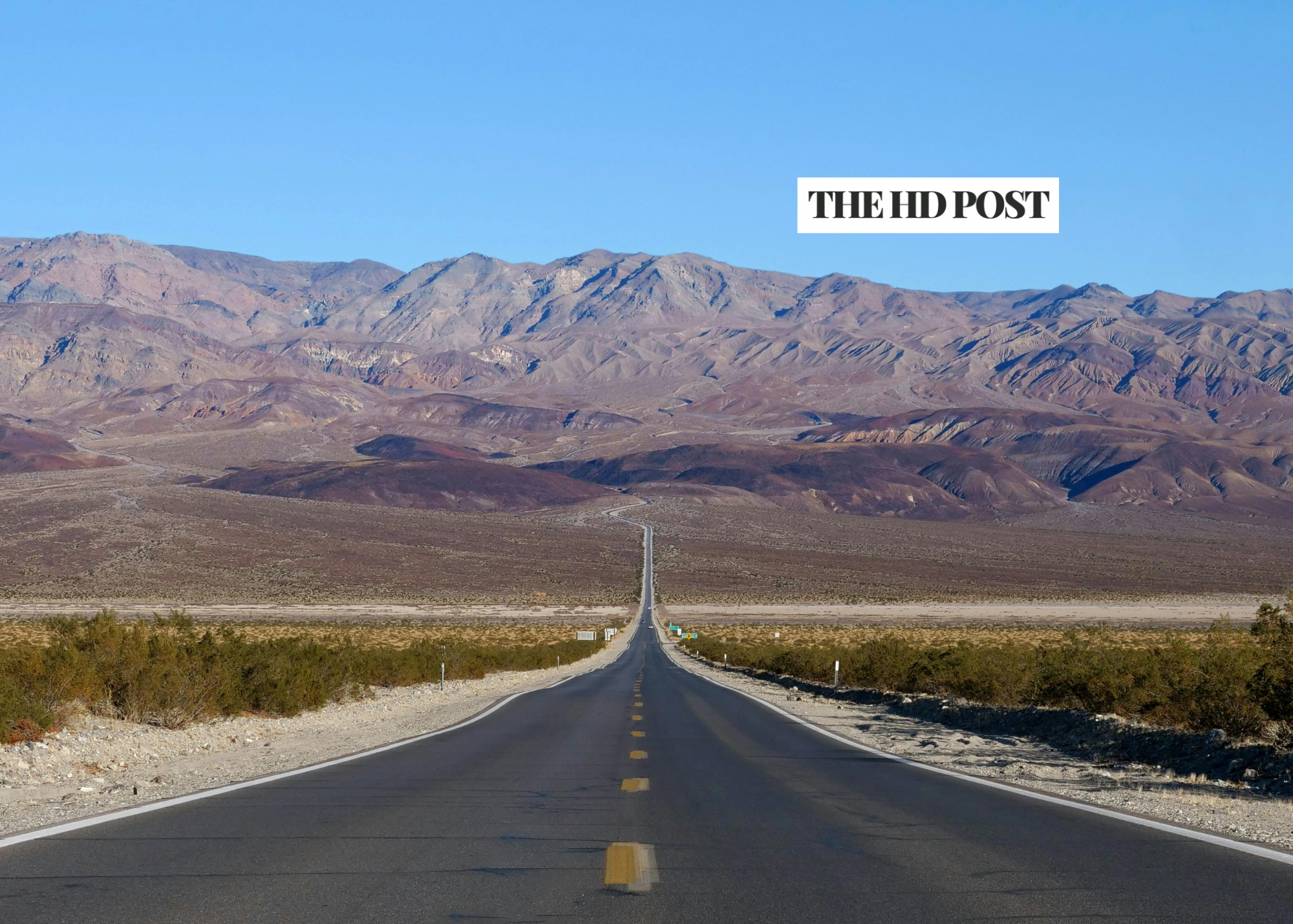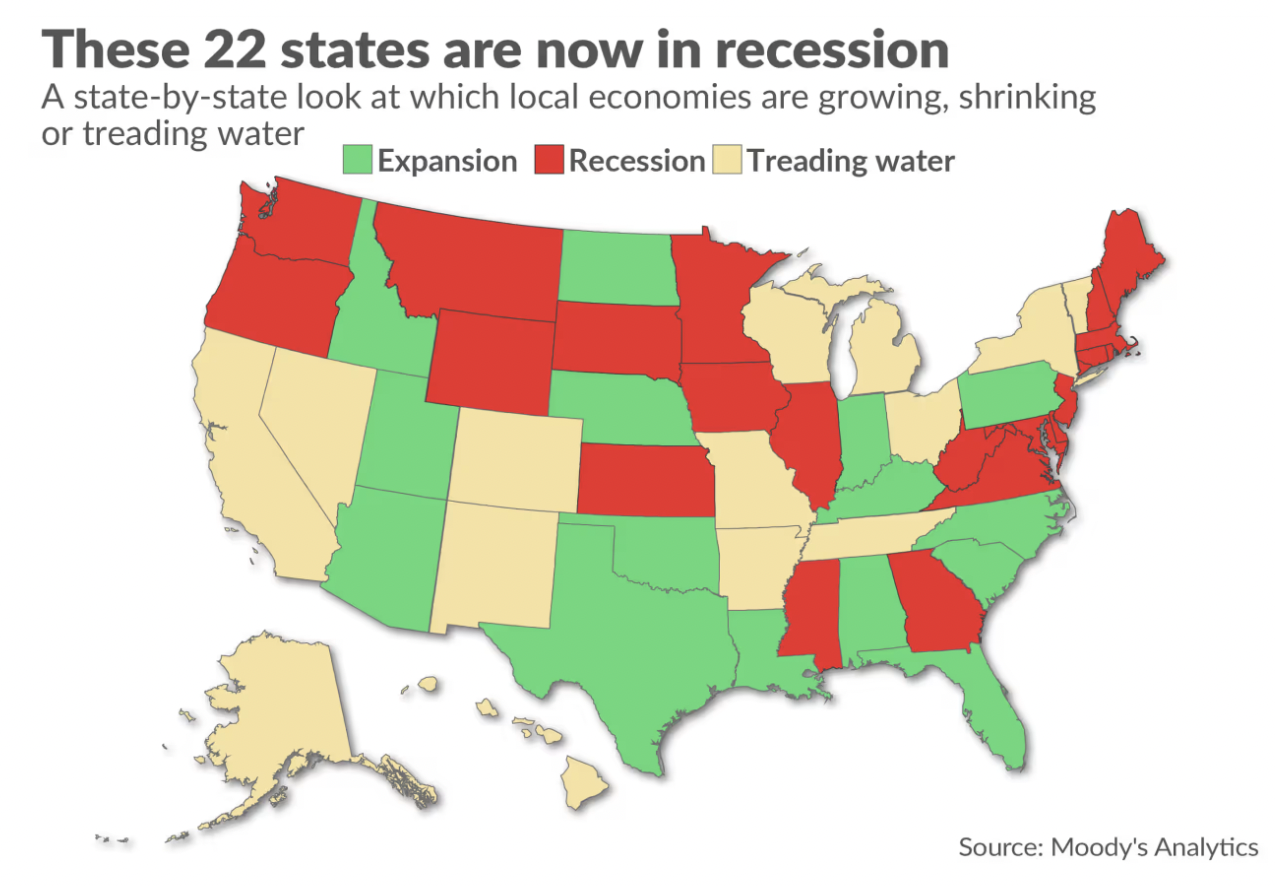
CALIFORNIA — According to a new analysis by Moody’s Analytics, 22 states are already showing signs of recession — and California is among those on the brink.
Mark Zandi, chief economist at Moody’s Analytics, says 22 states and the District of Columbia are now experiencing “persistent economic weakness and job losses that are likely to continue.”
California, once a national growth engine, is now among the states “treading water,” he said.
“The economy is still not in recession, but the risks are very high. We’re on the precipice,” Zandi said. He attributed the weakness to current economic policy.

California’s slowdown deepens — recovery expected in 2027
A separate report released last week by UCLA Anderson Forecast shows California’s economy trailing the national average in 2025.
The state has seen multiple quarters of job losses, and unemployment is expected to peak at 6.2% early next year.
Economists project California’s economy will bottom out between 2025 and 2026, with recovery beginning in 2027 — barring major disruptions.
Employment growth is expected to remain weak, with total job gains of just 0.5% in 2025 and 0.4% in 2026 before rebounding to 2.3% in 2027.
Real personal income is forecast to grow by 1.5% in 2025, 0.9% in 2026, and 2.7% in 2027.
Manufacturing and agriculture under pressure
For California’s economy to outpace the U.S. as it traditionally has, durable goods manufacturing — especially aerospace and tech, must rebound sharply.
In 2025, manufacturing saw its steepest job losses in transportation equipment, navigation systems, and semiconductors.
Aerospace is expected to benefit from resumed production at Boeing and Airbus, along with growing investment in space exploration and satellite manufacturing.
Boeing’s recovery is not expected to be affected by potential tariffs from China or India, as the company holds a 10-year backlog of aircraft orders that cover the production lost during the FAA’s three-year slowdown.
Still, both California and the nation continue to see declines in manufacturing jobs, with no clear timeline for recovery.
For technology, the issues are the issuance of a large number of H-1B visas and the rapidly changing skill set emphasizing AI development, now demanded by employers.
U.S. residents will work field and meat-processing jobs
Deportations are expected to hit two key sectors hardest — food processing and agriculture. The effects will be felt most in inland regions and the state’s agricultural coastal valleys.
The H-2A program allows U.S. companies to temporarily hire foreign agricultural workers. However, the Trump administration has shown no sign it will expand seasonal guest worker programs.
It’s believed that legally authorized U.S. residents will fill field and meat-processing jobs currently held by undocumented workers. Temporary worker visas may offset some labor losses but would likely cover only seasonal employees.
Temporary worker programs like H-2A are designed for partial-year entry into the U.S., not permanent employment.
Housing and construction remain sluggish
Residential construction also remains stalled. Higher interest rates, labor shortages, and post-disaster rebuilding have lowered the housing forecast since March.
UCLA projects 107,000 new housing units to be permitted this year, rising slightly to 117,000 by 2027 — far below what’s needed to ease the state’s housing crisis.
At this pace, analysts say the private sector is unlikely to make a meaningful dent in housing affordability within the next three years.
National recession outlook
While economists differ on whether California is formally in recession, the consensus is that its key industries are shrinking rather than expanding.
Zandi cautioned that if slowdowns in California and New York deepen, they could drag down the national economy.
RELATED: Is 2026 the year buyers catch a break? California housing forecast says yes

